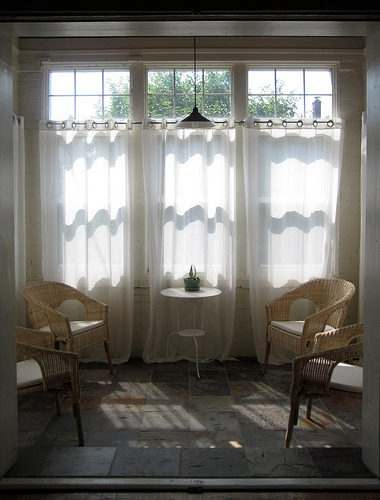Rooms are big! Decorating is a challenge when you’re thinking “big picture” from the start.
Have you ever thought smaller, via creating “vignettes?”
What makes a vignette?
In writing and art, “vignettes” are smaller scenes meant to have more impact. In decorating, it’s an area that’s a self-contained setting within a larger space. A little reading alcove, eating nook, or the stuff you surround your hallway table with — these are all examples of vignettes.
In a well-designed room, some elements should stand together as a group, and it should complement the larger space. That’s the theory of vignettes.
It sounds intimidating, but it’s not. When you start thinking logically about it, some of the choices before you are obvious.
Let’s talk our way through creating, for example, a little reading corner. Almost everyone I know values making a “reading” space in their home — that one spot where a book is never out of place — and it’s actually one of the easiest spaces to put together.
The beginnings of a reading nook
What do you need most of all? A good chair. So, you would pick the chair that first comes to mind when you think of reading a novel with a hot drink. That’s your reading chair.
Is it a pretty reading chair? Great! Or is a pretty shredded reading chair? If your cat’s had its way with the upholstery, you get the bonus step of considering a slipcover or the perfect throw blanket for camouflage — there, from pretty shredded to pretty cozy.
Where do you read? Where lighting is good! So, you’d probably enjoy being near a window, but also a plug outlet, so the reading lamp’s cord doesn’t have to stretch across the floor. This will narrow your choices. So too will the fact that you need space for, at the very least, a table & a big comfy chair.
And then there was (reading) light
With the new reading home chosen, put your chair in place. Looks good, doesn’t it? Now you’ll need the lamp. You don’t want to have to get up when dusk falls, just to turn on the light, so the lamp will have to be close at hand when seated.
The light needs to be softly filtered with a good shade, so you won’t get tired eyes. Nothing too big. It can be a standing floor lamp or a table lamp. If a floor lamp, it should be slightly to the side and behind you, with light source shoulder-height or higher when you’re sitting and reading.
Whether you use a floor or table lamp, you need a table. If you’re using a lamp on the table, then you may need a larger surface, because your teacup, notebook, and snacks saucer also need to squeeze in there so you can sip, nosh, and note your way through a rainy day.
Imagine your way to a detailed plan
You see how this is working? Imagine all the details of things you’ll need in order to really enjoy that space, and then make it happen.
So, your table should be about as high as the chair-arm for comfortable reading, tea-fetching, and well-appointed reading light. It should really have a drawer for a notebook, a pen, and anything else that could be useful on an afternoon of reading. I mean, who wants to stand and walk all the way to their desk for a pen to make a note about a bright idea when reading?
If you have a table lamp to use, put it in place, and turn it on. Now you have your chair, lamp, and table, in their new home.
Okay… now what?
Stand back. How’s it look? Not nearly finished, I imagine. You’ll need knickknacks. Possibly photos. Maybe even textiles. We’re just getting started!
Know what’ll tie it together, I bet? A piece of art, a mirror, or something else mounted above the chair. It should be lower than you might normally hang art, and that’s because you’re deliberately tying it to this scene. Hanging it lower creates a more intimate feel.
But what art should you pick? And what if you don’t have the art, how do you decide what to get?
Here’s where things get interesting, when we go from bare-bones to a personalized space, and for many people, this is the challenge.
When choosing the lamp, art, and whatever knickknacks you can conjure, they don’t have to match, but they do have to feel like they’re of the same mood, style, or era — there needs to be a common thread that makes sense.
Picking several items — textiles, art, and knickknacks — with a theme, and putting them all together, that’s how we create the perfect personal space. With those little items, that’s how we make it our space.
Interior design vignettes: you make the rules
There’s no need to panic, people. It’s about picking things that work for you, and no magazine or decorator could do that better than you. All you need are a couple easy guiding principles, and you won’t get so hung up what accessories will play well with each other. We’ll talk about it next time, as we run down some of the different ways to approach making a theme for your vignette.
(Article source: BuildDirect. Read full article and see more images here…)


Excellent entry! Thanks so much for sharing, great tips and outstanding information
Thank you for your vote of confidence!